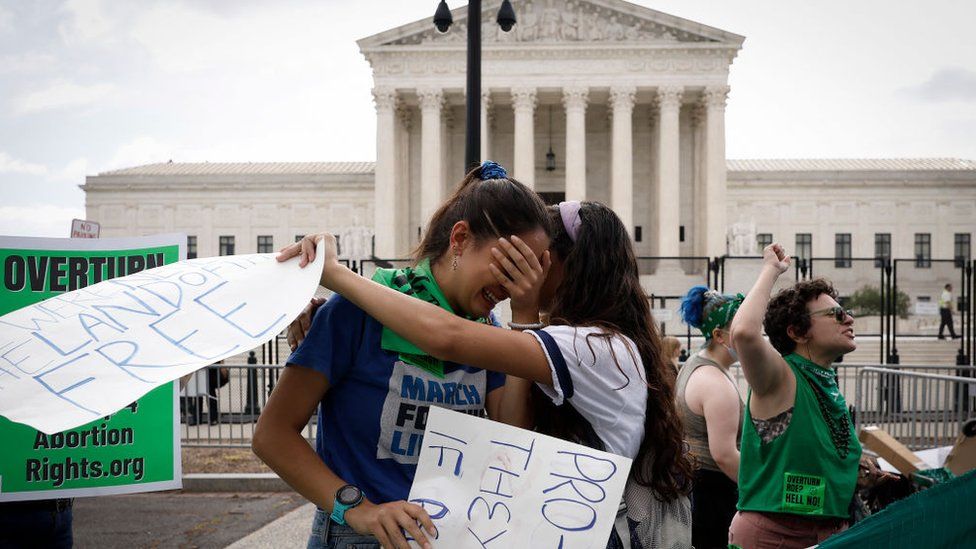It is justified to consider abortion as a moral and philosophical conundrum, but what about abortion as a real-world social practice? It might be worth looking at abortion empirically and historically because, as recent events allude, the abortion debate could theoretically aim to shape social policy.
The 40th President of The United States Ronald Reagan once argued the abortion debate to be an ideological struggle over women’s position in society and their freedom to sexual expeirnces without having to go through pregnancy, childbirth, and motherhood. In 1960, when Enovid-10, the world’s first commercially produced birth-control pill came into the market, it merged with the feminist movement’s demand to women’s bodily autonomy and reproductive rights.
In the 20th century, abortion as a moral conundrum and as a social practice has gone and is still going head-to-head as two opposing sides voice their truth.
In November 1972, a contentious two-part episode of the ground-breaking television program “Maude” was broadcasted. The episodes, titled “Maude’s Dilemma,” followed the main character’s decision to get an abortion. Two months later, in January 1973, The Supreme Court of the United States made a historic ruling in Roe v. Wade holding that a pregnant woman’s right to an abortion, for the first 12 weeks of her pregnancy, is generally protected by the U.S. Constitution. However, in June 2022, this decision was overturned taking away women’s constitutional right and protection to abortion.
In a society where we are now talking about individual freedom and expression, the Roe v. Wade decision is impacting hundreds of women in the United States today. Given the imperial dominance, this would affect the lives of women in all other parts of the world as well.
The reactions to“Maude’s Dilemma” included both celebrations and anger reflecting the spilt in the crowd today – pro-choice and pro-life. The political debate surrounding abortion has been ongoing for as long almost 50 years in the United States. Starting from arguments of patriarchal suppression and women’s bodily autonomy to which phase does life actually begin during pregnancy, there are many complex layers to this debate. While the June 2022 decision is a win for the pro-life community, pro-choice protestors and human rights advocates argue that this is a major step back for everyone and not just women.
Now, how did Roe v. Wade come into existence?
It began in 1969 when a Texan woman in her early 20s named Norma McCorvey tried to end an unwanted pregnancy. McCorvey had already given birth twice and given up both children for adoption. She had grown up in challenging, harsh, and poor conditions. Abortion was permitted in Texas during McCorvey’s pregnancy in 1969, but only if it meant saving the woman’s life.
While McCorvey and many other American women could travel to foreign countries where the procedure was safe and legal or pay a considerable sum to a U.S. doctor who was willing to perform an abortion in secret, such options were out of reach for many other women who lacked the finances and resources. It was also a matter of safety. As a result of such legal obstacles, several women turned to self-inflicted abortions or illegal and risky abortion options that were unregulated and harmful to their lives.
According to the Guttmacher Institute, between 200,000 and 1.2 million illegal abortions were thought to have taken place annually in the United States in the 1950s and 1960s.
McCorvey was referred to Texas attorneys Linda Coffee and Sarah Weddington after trying unsuccessfully to have an illegal abortion and learning that they were interested in contesting anti-abortion laws. In these court records, McCorvey was referred to as “Jane Roe” to protect her identity. The lawyers sued Henry Wade, an American lawyer who served as Dallas County’s district attorney from 1951 to 1987 and is known for his participation in the prosecution of Jack Ruby for killing Lee Harvey Oswald. In the trial of legalizing abortion, the ban against abortion in Texas was struct down in 1973 by the Supreme Court. This not only made abortion legal in Texas for all women but also effectively legalised the procedure nationwide. According to Justice Harry Blackmun, the court’s declaration of a woman’s right to an abortion was implicit in the right to privacy protected by the 14th Amendment.
In 2022, Dobbs v. Jackson Women’s Health Organization, a case in which the constitutionality of a Mississippi legislation prohibiting the majority of abortions after 15 weeks of pregnancy, was debated by the nation’s highest court. Roe v. Wade had prompted courts to decide that the law was unconstitutional. A fetus is thought to be able to survive outside of a woman’s womb at roughly 23 weeks, hence states were not allowed to outlaw abortions before this time under Roe. In its judgment, the Supreme Court upheld Mississippi’s legislation 6-3 and overruled Roe, which had served as a precedent for almost 50 years.
So, what does the overturning of Roe v. Wade mean?
Dobbs v. Jackson Women’s Health overturning Roe v. Wade nullifies the constitutional right to an abortion, eliminates the right of privacy for pregnant women, and permits states to criminalize abortion at any stage of pregnancy. Additionally, it allows for the prosecution of women who unintentionally cause injury to a fetus while pregnant, such as when they consume alcohol or are involved in car accidents.
Furthermore, anti-abortion groups have long asserted that numerous forms of contraception are comparable to abortion which is false. It can be anticipated that lawmakers and prosecutors will enforce their bans on abortion by prohibiting the use of the pill, Plan B, IUDs, and other long-acting, reversible contraceptives. The Dobbs decision establishes a legal standard that will require courts to give weight to state legislatures’ judgments on the issue of whether or not contraceptives are truly abortions rather than to scientific opinions. As a result, restrictions and criminalization of those contraceptives will be upheld.
Human rights advocates claim that overturning Roe will have negative effects on how the United States is perceived internationally and would even prompt some nations to enact stricter domestic laws.
Licha Nyiendo, Human Rights First’s chief legal officer, argued that this move takes everyone in the United States in “a very dangerous direction” and is “a frightening signal to authoritarians around the world that they can strip long-established rights from their countries’ people.”
According to Guttmacher Institute, a research organization supporting abortion rights, about 40 million women who are at the age of childbearing reside in states where abortion will become more difficult to access.
The Roe judgment has been contested numerous times over the past nearly 50 years, but this year’s overturning of the case seemed more plausible given the Supreme Court’s current conservative complexion. As the United States is one of the most-watched countries today, its policies and actions are not isolated. This overruling, according to experts, might have an impact on other countries while making the lives of women living in the States more challenging than it already is.
The overruling makes the fight for bodily autonomy for women even more difficult, obstructing one’s right to decide what happens to their body. With the state having the power to control what happens to a woman’s body, we can only surmise on what will happen next.
This overruling will not last if history were to repeat itself; it all depends now on time, the policymakers, and the perseverance of the protesters.






















